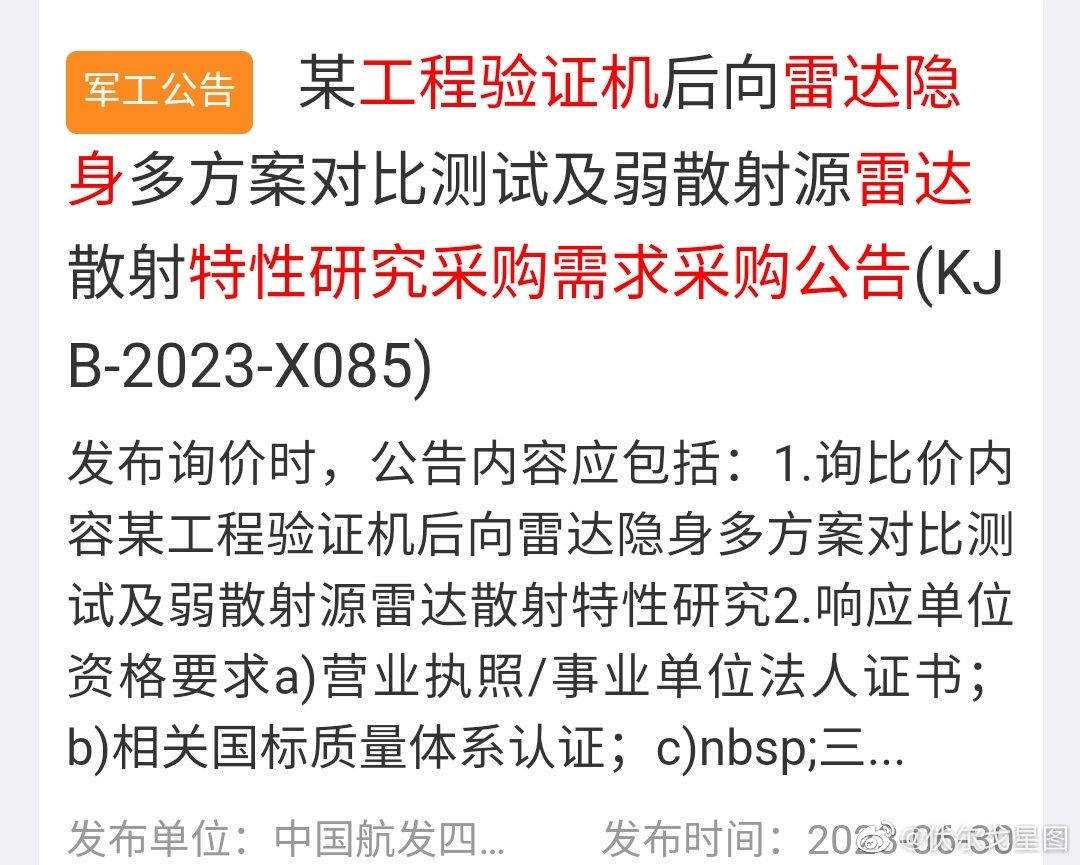by78
General
A procurement document that was posted today. It announces an open bid for a comparative radar signature test to be carried out on the rear aspect of a certain technology demonstrator (某工程验证机后向雷达隐身多方案对比测试及弱散射源雷达散射特性研究采购需求采购公告). If I'm reading this correctly, the bid implies that there are multiple competing designs, which necessitates a comparative test to find the design with the best radar signature reduction performance. Unfortunately, the screenshot partially obscures the name of the entity that submitted the bid; it only says "中国航发四", which could be AECC Sichuan Gas Turbine Research Institute/624 Institute (中国航发四川燃气涡轮研究院) or AECC Factory 402 (中国航发四二〇厂) or some other entity.
If indeed the document was submitted by the 624 Institute, then this could be for testing a new engine nozzle. WS-15 with a 2D and/or 3D TVC nozzle perhaps? If this bid has nothing to do with engines, then this could be about anything from H-20's rear fuselage design to J-20A's rear fuselage design.

If indeed the document was submitted by the 624 Institute, then this could be for testing a new engine nozzle. WS-15 with a 2D and/or 3D TVC nozzle perhaps? If this bid has nothing to do with engines, then this could be about anything from H-20's rear fuselage design to J-20A's rear fuselage design.

